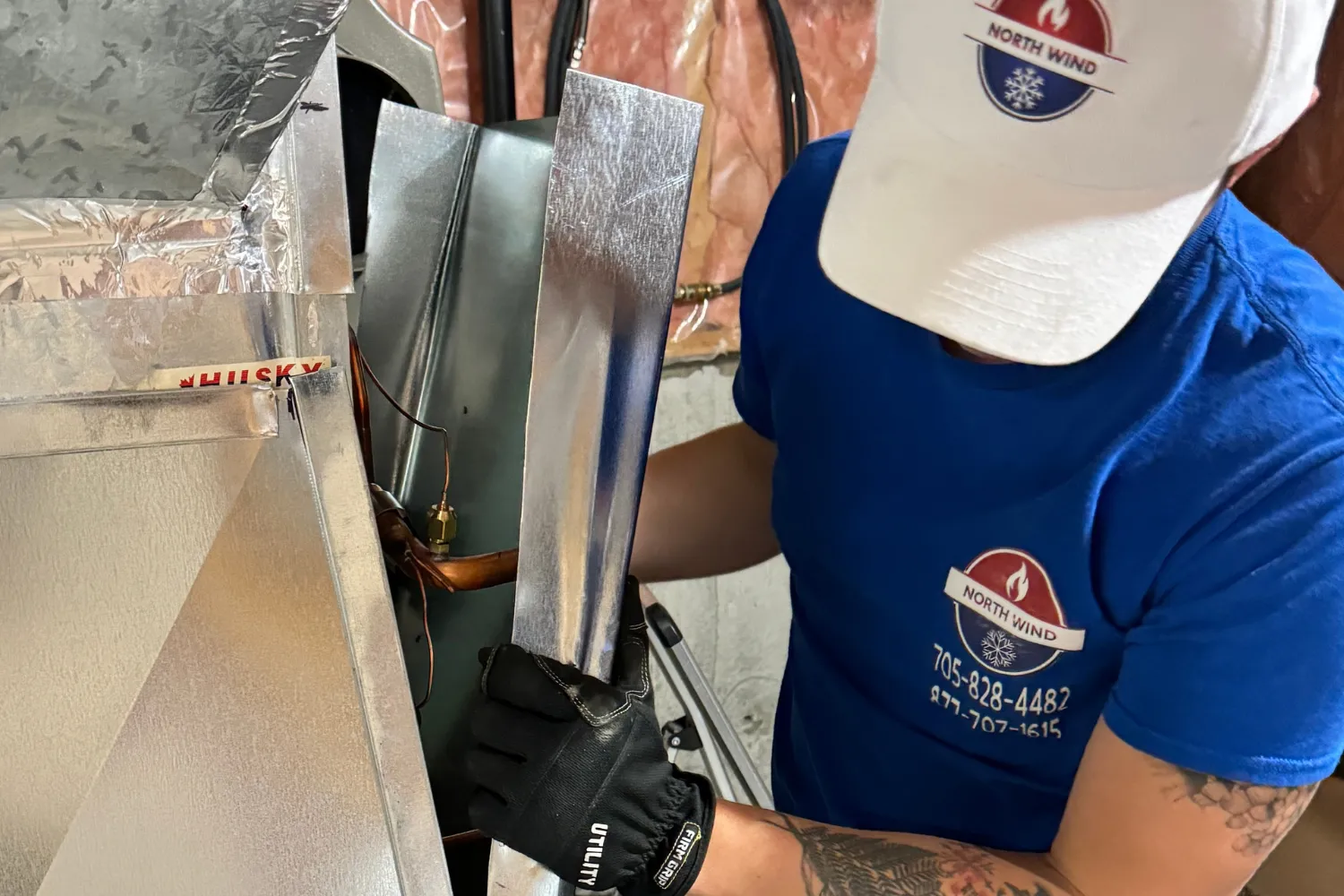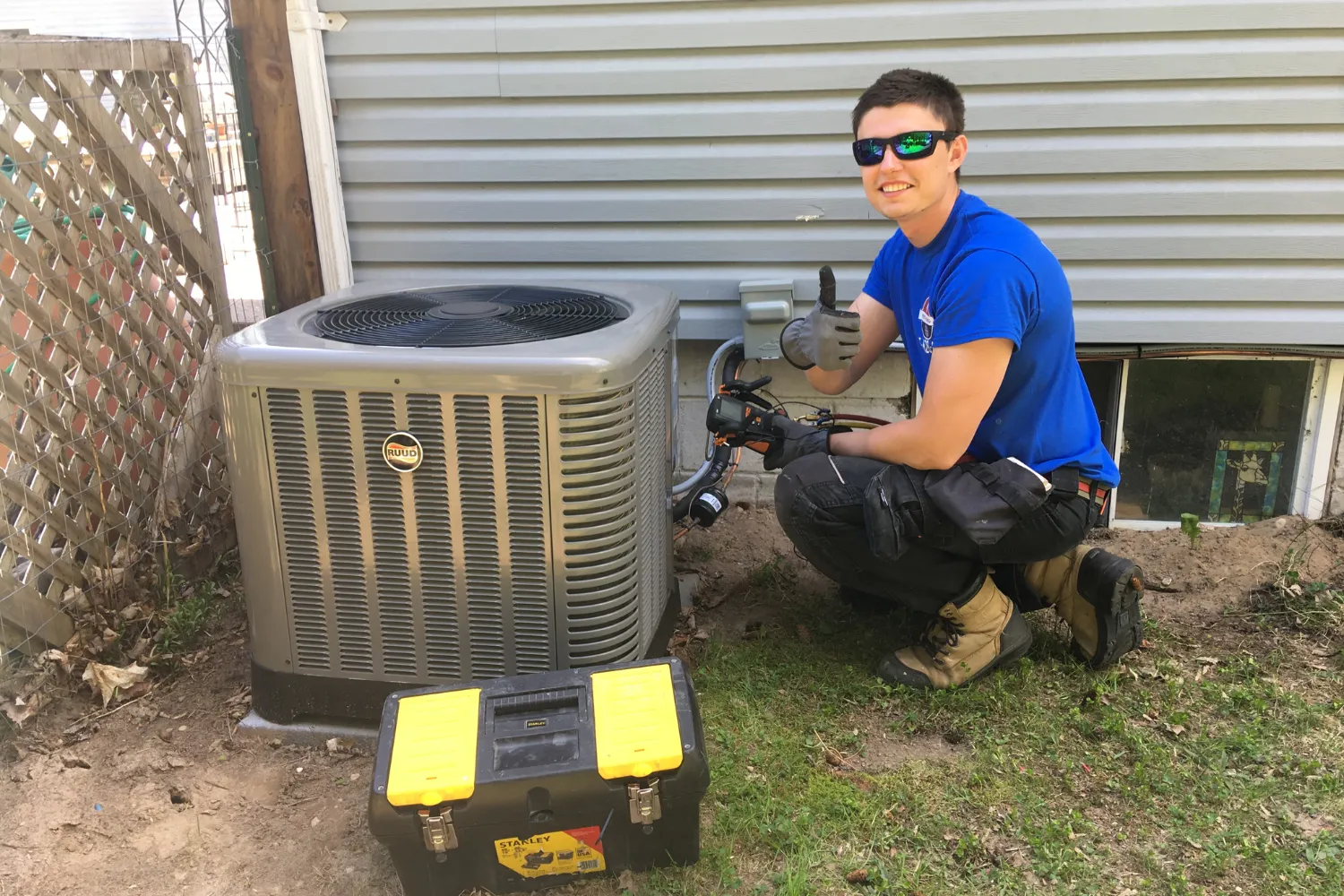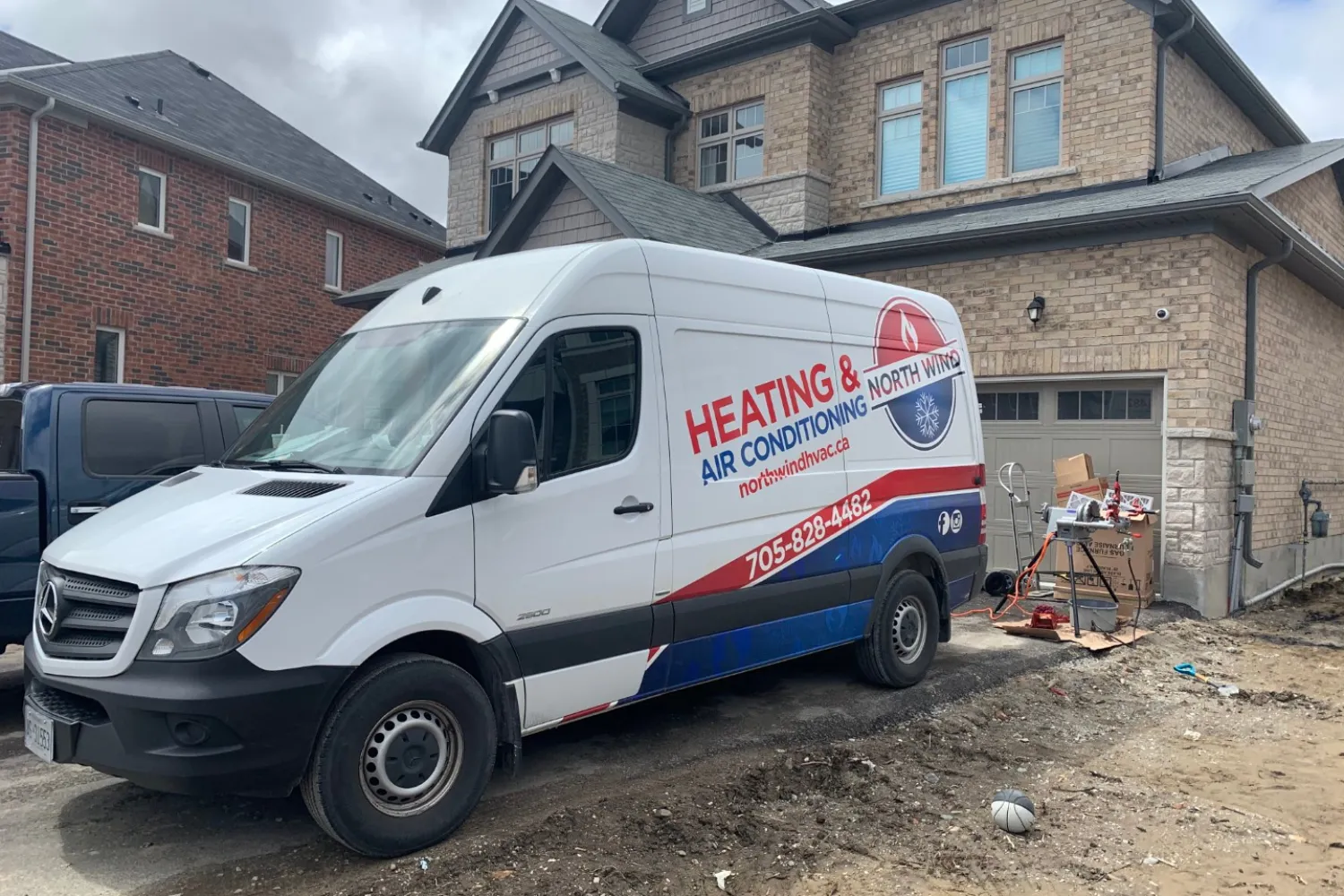Choosing the right size AC unit for your Ontario home isn’t just a technical decision, it’s the key to your comfort, peace of mind, and monthly energy bills. Calculating the right AC unit size involves understanding factors like BTUs, your home’s square footage, ceiling height, insulation levels, window placement, and more. It’s a frustrating experience when you invest in a new AC system, only to find it’s either struggling to cool your home or short-cycling all day long, running up your hydro bill.
We’ve seen it too many times, people buying oversized units thinking “bigger is better”, or undersized ones hoping to save money. Both can cost you more in the long run. So how do you find the perfect fit to install AC in your home? That’s what this guide is all about.
Steps to Calculate the Right Size AC For Home
The size of your air conditioner isn’t just about square footage. It’s about how your home holds heat, how it’s laid out, and even what direction it faces. Too small of an AC unit will run constantly without ever achieving the set temperature, while too big of a unit will cool way too fast and leave the air humid and sticky. It’s not only about comfort, it’s about preventing expensive AC repairs in the future. This applies to both central air and ductless AC systems, which are great for zoned cooling but still need to be properly sized. It’s not just about comfort, it’s also about protecting your system from overworking and avoiding costly repairs down the road. It takes a full understanding of how your home handles heat. Up next, we’ll break it down step-by-step so you know exactly how to figure out the right size AC unit for your Ontario home.
Step 1: Start With the Square Footage and Basic BTU Estimate
You do need a baseline, and that starts with the general BTU (British Thermal Unit) calculation. BTUs measure the amount of cooling power needed. A basic rule of thumb is:
You need roughly 20 BTUs per square foot of living space.
Here’s a quick example:
- A 1,500 sq. ft. home x 20 BTUs = 30,000 BTUs
To convert that to “tons” (how AC units are typically sold), divide the BTUs by 12,000:
- 30,000 BTUs ÷ 12,000 = 2.5 Ton unit
But remember, that’s still just a ballpark. Real homes need adjustments based on the next few steps.
Understanding BTUs: The Key to Sizing
AC capacity is measured in BTUs (British Thermal Units). One ton of AC equals 12,000 BTUs. Here’s a basic chart to give you a general idea based on square footage:
| Home Size (sq. ft.) | BTUs Needed | AC Tonnage |
| 600 – 1,000 | 18,000 | 1.5 Ton |
| 1,000 – 1,200 | 21,000 | 1.75 Ton |
| 1,200 – 1,400 | 24,000 | 2 Ton |
| 1,400 – 1,800 | 30,000 | 2.5 Ton |
| 1,800 – 2,100 | 36,000 | 3 Ton |
| 2,100 – 2,500 | 42,000 | 3.5 Ton |
| 2,500 – 3,000 | 48,000 | 4 Ton |
Accurate sizing requires a full load calculation.
Step 2: Account for Ontario’s Climate (And the Heat You’re Up Against)
Southern Ontario gets humid, sticky summers, especially in July and August. Homes in Toronto or the GTA that get hit with direct sun in the afternoon need more cooling power than those shaded by trees or facing north. This local climate factor can easily add 10–20% more load to your system.
What to do:
If your home faces the sun for most of the day or has lots of big windows, add around 600–1,000 BTUs to your base calculation. This small tweak can prevent those “why is it still so warm upstairs?” moments.
Step 3: Factor In Ceiling Height
Most calculations assume standard 8-foot ceilings. But many homes, especially in newer subdivisions or custom builds, have vaulted or 9–10 foot ceilings. More air = more space to cool.
What to do:
If your ceilings are higher than 8 feet, increase your base BTU load by about 10% for every additional foot.
So if your living room has 10-foot ceilings? Bump that room’s BTU requirement up accordingly.

Step 4: Look at Insulation and Window Quality
Insulation keeps cool air in and hot air out. Older homes in Ontario, especially pre-1980 builds, often have thin or deteriorating insulation. The same goes for single-pane or drafty windows.
What to do:
- Poor insulation? Add 1,000–2,000 BTUs to your calculation.
- Older windows or lots of glass? Add another 10%.
- Just replaced your attic insulation or installed energy-efficient windows? Good! You may actually reduce your needed size slightly.
This is one of the biggest reasons we always recommend a professional walkthrough, because it’s easy to miss air leaks or insulation issues unless you know what to look for.
Step 5: Count the People (and Appliances) Inside
Your AC doesn’t just cool your home, it cools the people, appliances, and even electronics inside. Every person adds body heat, especially in closed spaces or multi-level homes.
What to do:
- Add 600 BTUs per person regularly in the home beyond two.
- Add 500–1,000 BTUs for kitchens or areas with lots of appliances.
If you’ve got a large family, a busy kitchen, or work-from-home setups in multiple rooms, this can tip the scales fast.
Step 6: Don’t Forget Your Ductwork and HVAC System Health
You could install the perfect size AC, but if your ductwork is leaking, undersized, or clogged with debris, you’ll still feel warm. This is where we see a lot of problems during emergency ac repair visits, homeowners think the system is failing, when in reality, it’s just poorly distributing the air.
What to do:
- Have your ductwork inspected during your consultation
- Ask about balancing and zoning, especially in two-story homes
- Make sure your furnace fan is strong enough to handle the AC airflow (they work together!)
Step 7: Get a Manual J Load Calculation (The Gold Standard)
A Manual J calculation is the professional, tried-and-true method to get sizing 100% right. It’s a full assessment of your home’s layout, materials, usage, exposure, insulation, and more. It’s not guesswork, it’s math, backed by HVAC science.
What to do:
Ask your HVAC service provider for a proper load calculation before installing an AC unit. It’s especially important if you’re replacing an older system, upgrading after a renovation, or pairing it with a new furnace or heat pump.
This will eliminate the guesswork and give you the peace of mind that your system won’t overwork, underperform, or die early.
The Manual J Load Calculation
This isn’t guesswork, it’s science. A Manual J Load Calculation is the industry standard for determining the proper size of your HVAC system. It factors in:
- Wall construction and insulation
- Window type and placement
- Number of occupants
- Appliance heat gain
- Duct placement and condition
- Floor coverings and roofing materials
Mistakes to Avoid When Sizing an AC Unit
Guessing based on your neighbour’s unit
Their home might look the same outside, but it has completely different insulation, orientation, or ductwork.
Going too big “just in case”
Bigger isn’t better. Oversized units have short cycles, which leads to uneven cooling, humidity problems, and more wear and tear.
Ignoring other parts of your HVAC system
An old or mismatched furnace, clogged ducts, or dirty filters can make even the best AC feel weak.
Skipping maintenance
A properly sized system still needs regular AC repair and tune-ups to run efficiently. Don’t wait for an emergency heat pump repair or furnace repair service call; set up seasonal maintenance now.
Why DIY AC Unit Size Can Go Wrong
Rule-of-thumb calculations and web-based calculators are appealing. Without an inspection, though, you could overlook important factors like insulation degradation, air leaks, or even zoning problems. We had one Toronto client who had a 3-ton unit installed by square footage, but after we received repeated emergency AC repair calls from them, we found it was oversized and short-cycling due to new windows and upgraded insulation. We installed the correct unit, and their utility bill decreased overnight.

When to Size Your Home Air Conditioner Up or Down Slightly
Sometimes, you’re on the line between two sizes. Here’s a quick guide:
Size up if:
- You get full sun exposure during peak hours
- Your home has poor insulation or older windows
- You have high ceilings or a large family
Size down if:
- Your home is shaded and well-insulated
- Your lifestyle is low occupancy or part-time residence
- You’ve done energy-efficient renovations
What to Expect from a Professional AC Consultation
When our team arrives for an on-site consultation, we don’t just measure rooms. We inspect your ductwork, check insulation, and assess your existing furnace and AC setup. We look for signs of past issues like furnace leaking water or recurring emergency heat pump repairs. With a full breakdown of what your home actually needs, not just what the label says. You’ll get a free quote, a realistic timeline, and no sales pressure.

What It Costs to Install the Right AC Size Unit
Prices vary, but here’s a general idea for Southern Ontario:
- 1.5 – 2 Ton AC Unit: $3,500 – $5,000
- 2.5 – 3 Ton AC Unit: $4,500 – $6,500
- 3.5 – 4 Ton AC Unit: $5,500 – $7,500
Upgrades like smart thermostats, ductwork improvements, and air quality add-ons will affect the total. Always ask what’s included in the quote, especially if you’re pairing it with a furnace repair service or water heater installation.
Right AC Size Is More Than Just a Number
Sizing an AC unit for your Ontario home is about balance, between power and efficiency, cost and comfort, now and in the future. It’s not about buying the biggest unit your budget allows, but the right one your home needs.
A properly sized and professionally installed AC unit doesn’t just cool your space, it adds value to your home, reduces repair bills, and gives you peace of mind through every sweltering Southern Ontario summer.
Need help figuring out what your home really needs? North Wind HVAC proudly serves Barrie, Toronto, and the GTA with expert HVAC services including AC installation, furnace repair, water heater upgrades, and more. For fast, reliable service and honest advice, call us today!
